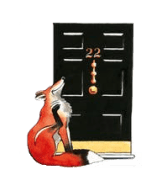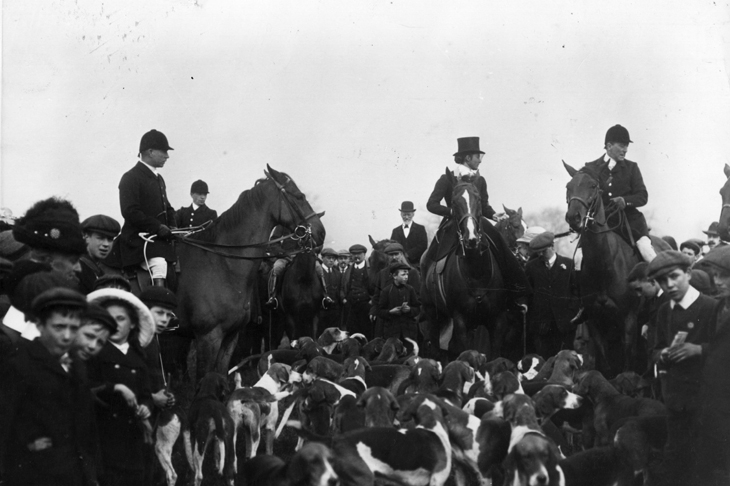Earlier this month, the Quorn and Cottesmore hunts took separate votes on merging. The Quorn voted for, the Cottesmore against. So the merger will not take place. The fact that the Quorn wants a merger is, given its history, astonishing. For a century and a half, it was the epitome of fast, grand hunting — with too much ‘leaping’ for hunting purists, but any amount of swagger. Melton Mowbray was to hunting what St Moritz is to skiing. The place was full of louche, rich, grand persons, chancers, hucksters, poules de luxe, all so well satirised by Surtees. There the future Edward VIII met Mrs Simpson. People would take a ‘box’ nearby for the season or come up from London by train. More than 80 per cent of the subscribers were non-residential. Hunting was four days a week. As recently as 25 years ago, the hard riding fields were quite often over 150-strong. No longer. Nothing to do with the ban, or the antis, but with loss of country from big roads, high-speed railways, East Midlands airport, expanding towns and too much commercial shooting. The Quorn was never the heart of hunting, perhaps, but you could say it was its gilded head. Now it is a wounded survivor of the time when everything was grass from Nottingham to Market Harborough, laid low by urbanisation.
Why not merge, then? The Quorn’s neighbour, the Cottesmore, has a similar sort of hunting. Would there not be a synergy? Maybe, but hunt mergers are right only sometimes. The real homework must be done; the right feeling must exist. Despite its noble associations, hunting depends, almost literally, on its grass-roots. The farmers without whom it could not exist need to belong, otherwise why would they lend their land? The merged Quottesmore country would be 20 miles by 50 miles, stretching from Kirby Bellars to Spalding in Lincolnshire. Would the distances and transport costs involved be too great for local people? Paradoxically, farmers are often happier having a hunt they know on their land once a fortnight than a largely unfamiliar one once a month. Mergers tend to shrink the total amount of country hunted and reduce its connection with its inhabitants. The modest two-day-a-week hunts which are now the norm may prove more resilient than big ones yoked uneasily together. There can be no single doctrine about this. As country people will celebrate this Boxing Day, every hunt is different.
You cannot make champagne in England. No, that’s not true. You just cannot, by law, call it champagne. But over the past 20 years, after some false starts with still white wine, the southern English have decided to get fizzing, and take on the French on quality, not price. As a result, the French are tacking to the wind. Taittinger has bought land in Kent and Pommery in Hampshire, much cheaper than round Epernay. A few years ago our neighbours in Sussex, Simon and Lucinda Fraser, started a vineyard on ten acres — clay with a bit of greensand — of their Mountfield estate, and set up their own winery. When he was a banker, Simon yearned ‘to make something’ instead. Making something good takes time. Only now is their first cuvée, from 2014, on sale, and only 600 bottles are available to the public. That amount will eventually rise to more than 10,000 bottles. At £32 a bottle, its price is similar to that of the standard French houses. How should the drink produced be named? Simon points out that French champagne carries the name of people, but the English rival usually adopts the place name. So ‘Mountfield’ it is, with a label showing the Frasers’ house with the door altered to accommodate an M for Mountfield and a W for winery, ‘MW’ being a powerful pair of initials for oenophiles. The Moore family tasted our first bottle this week. The product is golden yellow, and tastes biscuity. I detected a bit of apple. Thin, citrusy tastes are avoided. This is the rich stuff that lasts, and which the English like. ‘It just tastes like champagne,’ said our son, unprompted. That was exactly what he was supposed to say.
James Knox should be celebrated by Spectator readers because, as our publisher in the 1980s, he was the first to push the paper towards the commercial success it enjoys today. Nowadays, James runs the Wyfold-Fleming Art Foundation, which has an outstanding collection of Scottish art. Its magazine Scottish Art News announces what is surely rather a moving discovery. Looking at a print of a lost original by Pieter Brueghel the elder of the fall of Icarus (not the ‘Fall of Icarus’ about which Auden wrote his poem, but another one by the same artist), Professor Duncan Macmillan noticed that it was ‘the wrong way round due to the printing process’. Reversing it, he realised that it depicted in the background the Bass Rock in the Firth of Forth, gannets included. This makes it the earliest known image (1560-65) of an actual (as opposed to fancied) Scottish landscape. Scotland should feel flattered that it was first visually recorded by a foreigner. Landscape art is so familiar to our idea of what European countries look like that we forget that, once upon a time, no one knew what they looked like without seeing them. Brueghel (the right way round) must have had a lovely shock of the new about it.
I have just shot through Adrian Dangar’s new account Life on the Edge: Tristan Voorspuy’s Fatal Love of Africa. I knew Tristan because I went on one of his thrilling safari rides in Kenya. Last year he was murdered, aged 61, trying to defend a lovely conservation area from a politically motivated land invasion. His horse, Loita, was then killed and eaten by the Pokot invaders. This is a gripping story, funny, inspiring and sad. Essentially, from his childhood — when a friend shot out one of his teeth with an air rifle — Tristan’s entire life was about risk, its joys and sorrows. To a risk-averse culture cosily at home this Christmas, it will be a revelation.







Comments